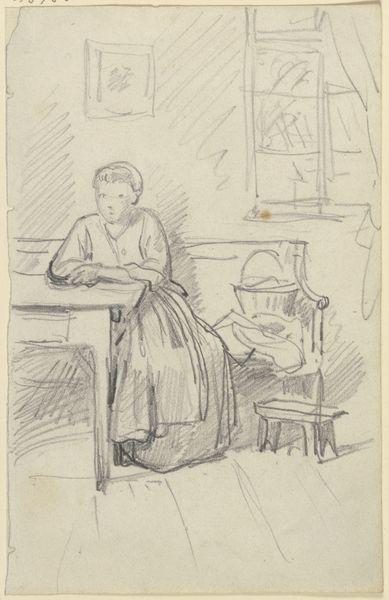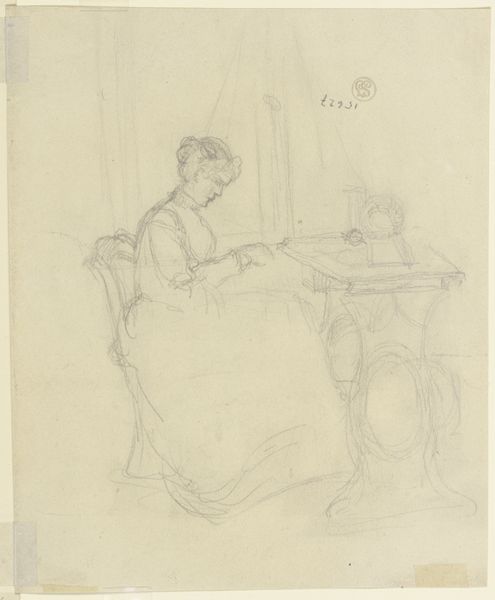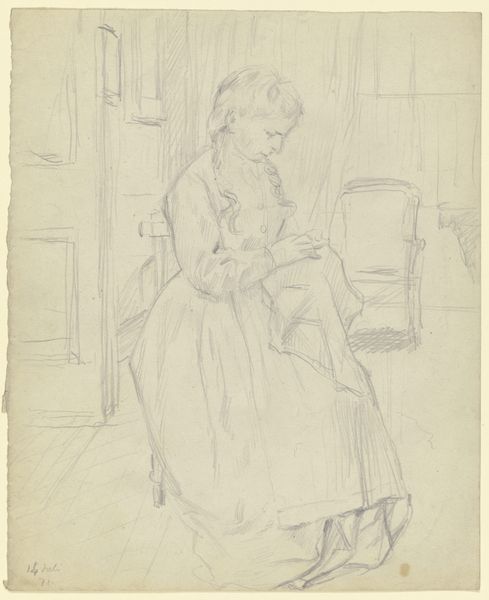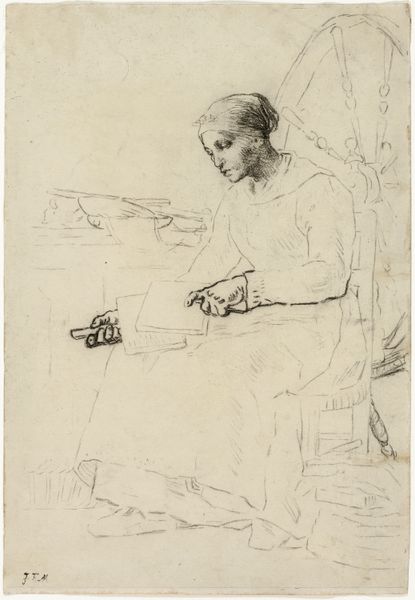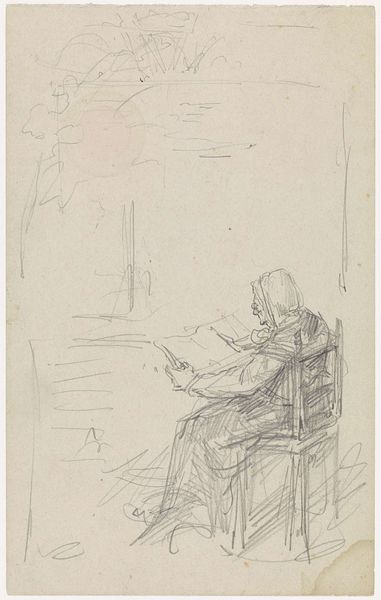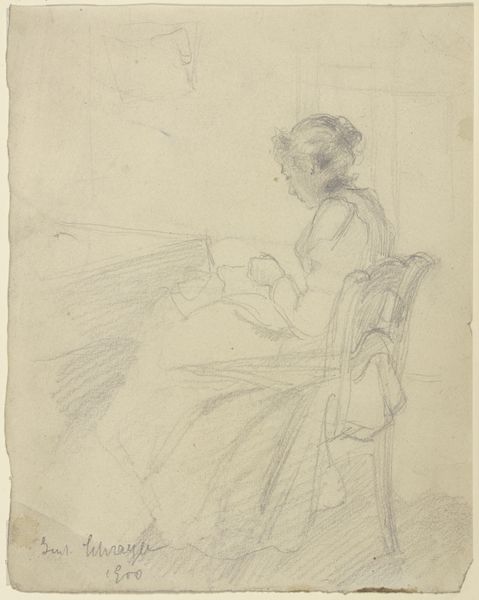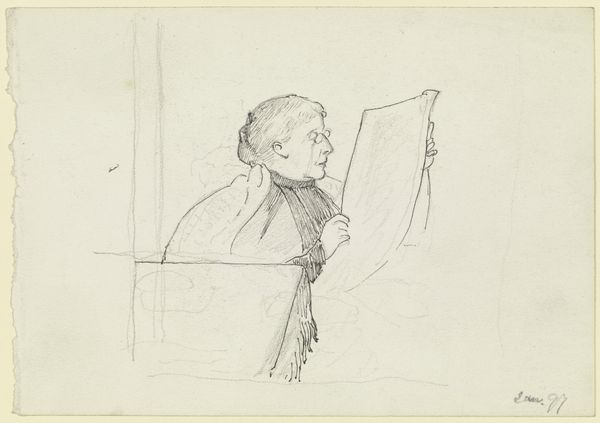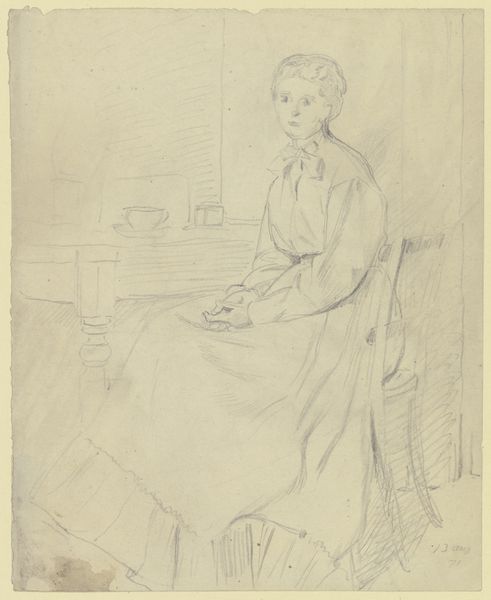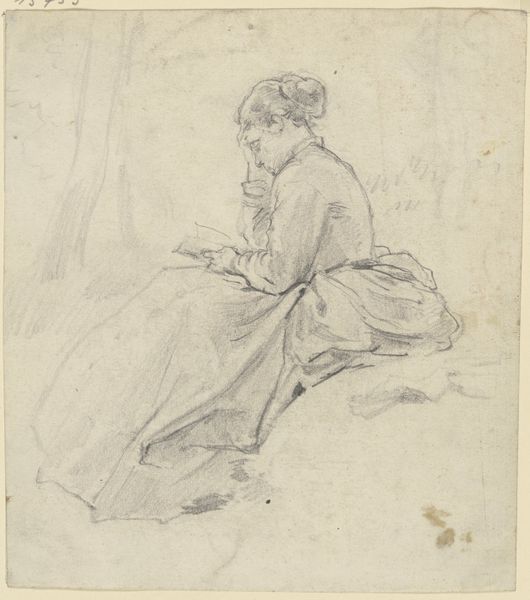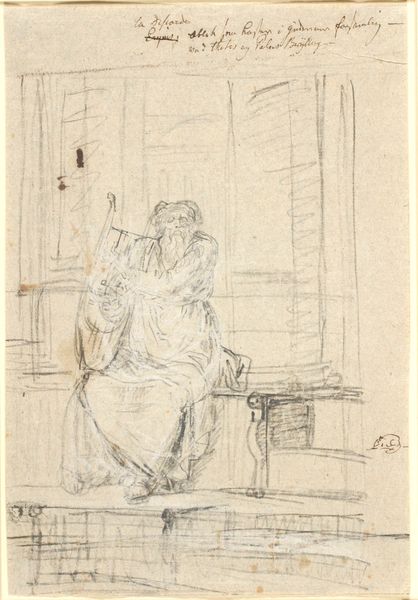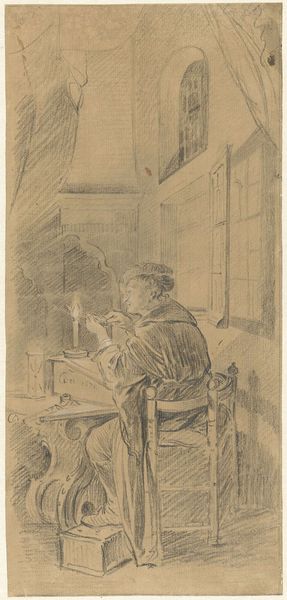
Copyright: Public Domain
Curator: Oh, this gives me a very specific feeling…a Sunday afternoon, quietude, gentle light…almost melancholy, but a very lovely kind. Editor: That’s interesting. This is Otto Scholderer’s pencil drawing, "Dame auf einer Veranda, bei der Handarbeit" or "Lady on a Veranda, Doing Needlework." It was made in 1873 and currently resides in the Städel Museum. To me, it suggests a woman contained within very specific societal expectations. Curator: Well, certainly she’s confined to her domestic sphere here on the veranda. It also evokes something of the fleeting beauty of such moments captured on paper – ephemeral, personal, maybe even a bit unfinished, don't you think? Editor: Yes, I do. Pencil as a medium lends itself to that impression. It gives us a window into the everyday life of a woman from the late 19th century. Consider how limited women's opportunities were outside of marriage and the home. Needlework became not only a necessary skill but also a form of imposed, if occasionally creatively fulfilling, labor. Curator: Ah, there's a real tension there, isn’t there? Between the imposed activity and the genuine artistry it could allow. Maybe this sketch represents that balance? There's a grace in her posture, a tranquility about the whole scene despite what might lie beneath. And yet, that act of creation… perhaps there’s a hidden defiance, or at least, a claim to autonomy within limited means. Editor: Indeed. I think that the romantic style gives us permission to delve deeper into our personal associations. In Scholderer's time, art began to mirror back to itself some awareness about the restrictive gender roles. By inviting us to reflect, artwork, particularly of this genre, subtly prompts us to scrutinize social and interpersonal relationships during rapid societal shifts. Curator: So well observed, and isn’t it amazing how a simple pencil sketch can carry so much weight? It is indeed more than just a pretty picture – it is also a social artifact, alive and full of feeling. Editor: Precisely. When seen through an intersectional lens, seemingly benign artworks from history continue to shed light on societal issues, reminding us to think critically about those narratives, both visible and unseen.
Comments
No comments
Be the first to comment and join the conversation on the ultimate creative platform.
